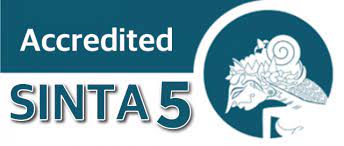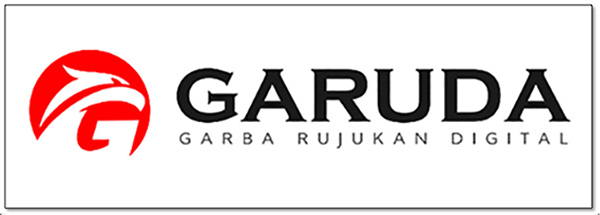ANALISIS PELAYANAN RUMAH SAKIT UMUM DENGAN PERBANDINGAN ANTARA METODE ALGORITMA KMEANS, DAN K-MEDOIDS CLUSTERING
DOI:
https://doi.org/10.34012/jutikomp.v6i2.4145Keywords:
K-Means Algoritma, K-Medoids Clustering, Service, HospitalAbstract
Hospitals are part of a health system that aims to provide comprehensive individual health services. Services include inpatient, outpatient, and emergency care. Hospitals must provide high-quality services according to existing standards and serve all levels of society. Understanding customers' needs, wants, and demands will provide Another factor that affects the quality of health services is the availability of resources and service facilities during the insurance period. Lack of continuity of service affects the efficiency and quality of the relationship. The quality of health services is also strongly influenced by the ease of information and timeliness of public hospital services. Based on data from 341 hospital service quality surveys, the results obtained from the K-Means algorithm method are 2.701288, while the results obtained in the K-Methoids Clustering method are 2.17, where the General Hospital service questionnaire is a very satisfied category. A comparison of the results of the K-Means and K-Medoids methods aims to make it easier to measure customer satisfaction.
References
A, Syaiful. 2022. Pelaksanaan Pembelajaran Di Stai Rakha Sebelum, Semasa Dan Sesudah Pandemi Covid-19.Vol, 2.No, 1.
F, Nandang. 2020. Inovasi Pembelajaran Daring Pada Masa Pandemi Covid19.Vol, 3.No, 1.
Manshuruddin. 2021. Strategi Inovasi Pembelajaran Pendidikan Agama Islam Pada Masa Pandemi Covid-19 Di Smp Panca Budi Medan.Vol, 2.No, 1.
A, K, Ahmad. 2017. Kajian Konseptual Model Pembelajaran Blended Learning Berbasis Web Untuk Meningkatkan Hasil Belajar Dan Motivasi Belajar. Vol, 4.No, 2.
Usman. 2018. Komunikasi Pendidikan Berbasis Blended Learning Dalam Membentuk Kemandirian Belajar. Vol, 4.No, 1.
W, K, I. 2018. Blended Learning Sebagai Alternatif Pembelajaran Di Era Digital.Vol, 2.No, 2.
A, Astrid. Dkk. 2018.Analisis Hybrid Mutual Clustering Menggunakan Jarak Square Euclidean.Vol, 1.No, 2.
A, R, Elok. 2021. Pengklasteran Daerah Di Jawa Timur Berdasarkan Curah Hujan. Vol, 9.No, 2.
[W, Edy. Dkk. 2018.Analisis Cluster Penderita Disabilitas Mental Di Provinsi Daerah Istimewa Yogyakarta Tahun 2016.Vol, 6.No, 2.
A, Intan. A, Lilik.2019. Penerapan Metode Kna (Kombinasi K-Means Dan Agglomerative Hierarchial Clustering) Dengan Pendekatan Single Linkage Untuk Menentukan Status Gizi Pada Balita.Vol, 1.No, 2.
A, Ginanjar. 2018. Clustering Data Kredit Bank Menggunakan Algoritma Agglomerative Hierarchial Clustering Average Linkage. Vol, 4.No, 1.
R, W, Intan. Dkk. 2018.Analisis Dan Implementasi Algoritma Agglomerative Hierarchial Clustering Untuk Deteksi Komunitas Pada Media Sosial Facebook.Vol, 5.No, 1.
D, R, T, Andrea. Dkk. 2019.Penerapan Hierarchial Clustering Metode Agglomerative Pada Data Runtun Waktu.Vol, 1.No, 2.
A, Zenal. Dkk. 2017.Klasterisasi Genre Cerpen Kompas Menggunakan
Downloads
Published
How to Cite
Issue
Section
License
Copyright (c) 2023 Christnatalis -, Eric Claudyo, Lucky -, Herry Kristover Manullang, Arus Iman Zebua

This work is licensed under a Creative Commons Attribution-ShareAlike 4.0 International License.
- Hak Cipta atas naskah-naskah karya ilmiah di dalam Jurnal ini dipegang oleh Penulis.
- Penulis menyerahkan hak saat pertama kali mempublikasi Naskah karya ilmiahnya dan secara bersamaan Penulis memberikan izin/lisensi dengan mengacu pada Creative Commons Attribution-ShareAlike 4.0 International License kepada pihak lain untuk menyebarkan karya ilmiahnya tersebut dengan tetap mencantumkan penghargaan bagi penulis dan Jurnal Teknologi dan Ilmu Komputer Prima sebagai media Publikasi pertama atas karya tersebut.
- Hal-hal yang berkaitan dengan non-eksklusivitas pendistribusian Jurnal yang menerbitkan karya ilmiah penulis dapat diperjanjikan secara terpisah (contoh: permintaan untuk menempatkan karya yang dimaksud pada perpustakaan suatu institusi atau menerbitkannya sebagai buku) dengan Penulis sebagai salah satu pihak perjanjian dan dengan penghargaan pada Jurnal Teknologi dan Ilmu Komputer Prima sebagai media publikasi pertama atas karya dimaksud.
- Penulis dapat dan diharapkan untuk mengumumkan karyanya secara online (misalnya pada Repositori atau pada laman Organisai/Institusinya) sejak sebelum dan selama proses pengumpulan naskah, sebab upaya tersebut dapat meningkatkan pertukaran citasi lebih awal dan dengan cakupan yang lebih luas.








